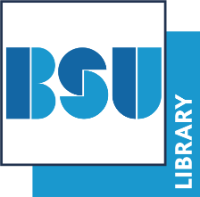Kuhn, C (2014) History of mathematics in a personal learning environment: a context to connect ideas and cross the bridge from analogue con-sumers to digital pro-sumers. In: BSHM Research in Progress, 22 February 2014, Queens College, Oxford, UK.
Abstract
Our way of thinking and feeding our mind has changed with humans’ intellectual tools throughout history. For example, the technologies of the map and the clock advanced the evolution of abstract thinking. A more conceptual example would be the calculus, an intellectual tool that from its very beginning has not only kept on changing our way of thinking and feeding our mind, but also revolutionised humankind, allowing it to ‘see’ the world from a different perspective. The world we live in —the earth— could now be seen from an unexpected place such as the moon. This fact changed radically the perspective we had of our own planet. The calculus, in the words of Morris Klein, is definitely a landmark in human thought. Bringing this subject to life, integrating Newton’s original notes (available from the Newton Project) and some relevant passages from history, I aim to enrich the understanding of the roles played by cultural and mathematical context in the invention of new branches of mathematics; hence making mathematics more human, one of the fundamental ideas Hans Freudenthal had 30 years ago. The particular examples of what this integration will look like in practice are still open for research. Just as the calculus has changed humans’ way of thinking, so are digital tools and the Internet changing how young people approach knowledge and therefore the way they learn. As the calculus gave a new perspective to the study of space, digital tools combined with the Internet are changing the perspective of ‘space’ and in particular of ‘learning space’. Colliding virtual and physical spaces into one that I will call ‘Dynamic Space’.My research interest is precisely in how the learning of mathematics develops in such a space. To summarize, the aim of my research project is to design a learning intervention using cultural context and historical material as a tool to foster connections among seemingly fragmented bits of inorganic mathematical knowledge, and to promote in 17–18-year-old students the learning of mathematics through knowledge re-invention, making mathematics a human activity. This is an idea that lies in the foundations of Realistic Mathematics Education theory, a way of learning introduced by Hans Freudenthal, for which, following van Maanen’s and Lawrence’s ideas, history will serve as a guide throughout the process, using technology as a workbench for the crafting of intellectual artifacts by young students in the learning process.
| Item Type: | Conference or Workshop Item (Other) |
|---|---|
| Divisions: | School of Education |
| Date Deposited: | 09 Jun 2021 13:39 |
| Last Modified: | 15 Aug 2021 09:56 |
| URN: | https://researchspace.bathspa.ac.uk/id/eprint/14146 |
 |
Request a change to this item or report an issue |
 |
Update item (repository staff only) |

 Tools
Tools Tools
Tools